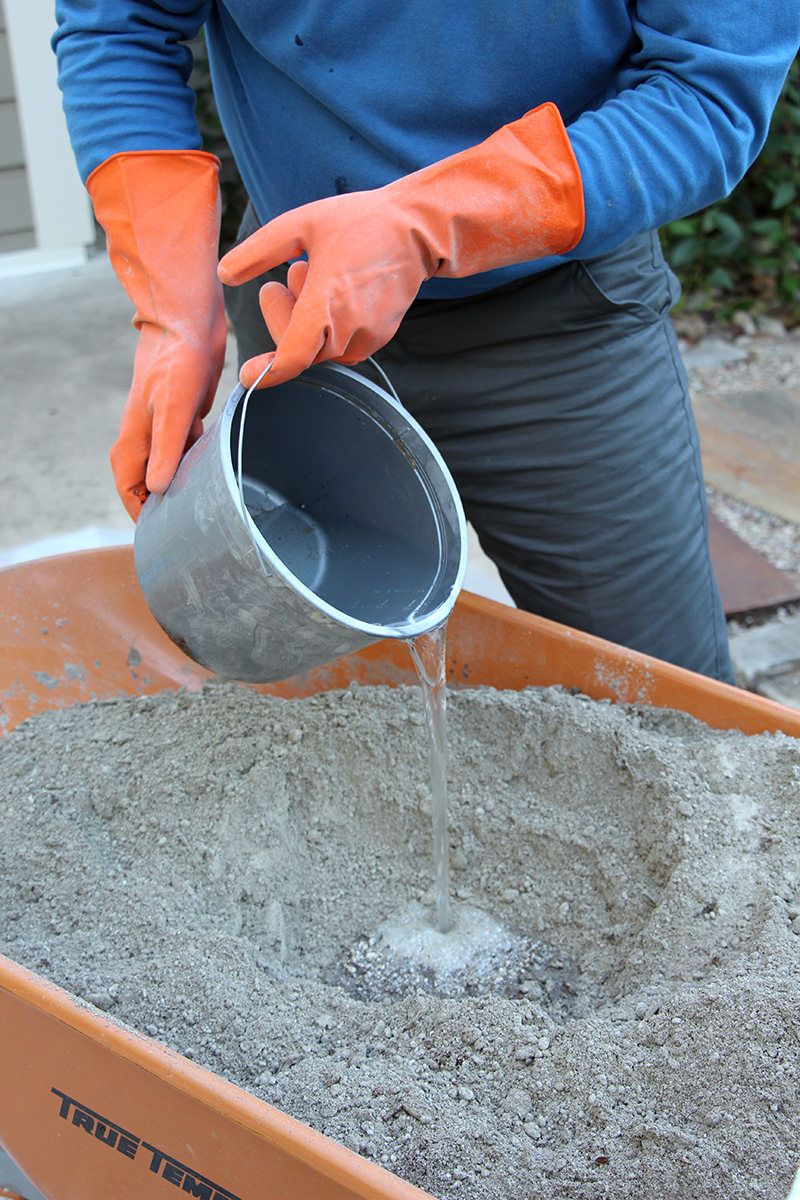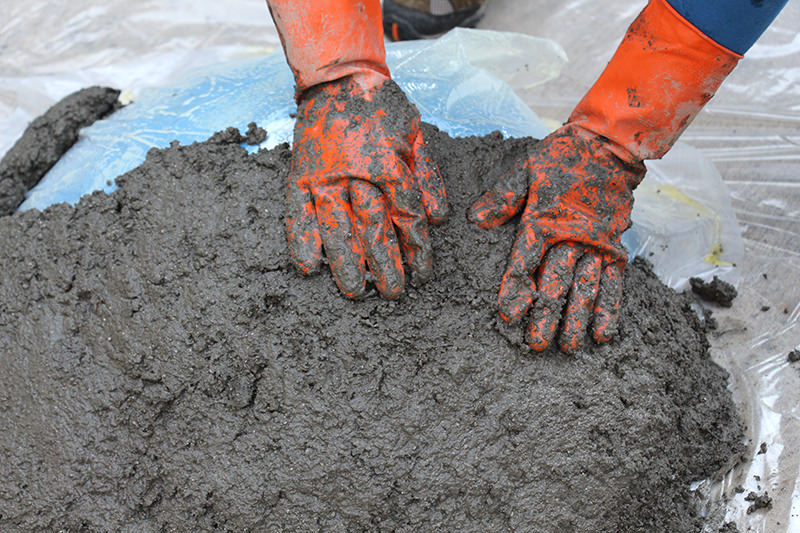
Hypertufa is a lightweight and weather-resistant blend of peat moss, perlite and Portland cement. It’s the perfect choice for DIY container-gardening projects for those on a budget. Hypertufa looks like concrete but is a fraction of the weight and cost. You can make just about any size and shape of container with it. Plus, mixing it up is a lot like playing with mud pies—frankly, it’s kind of addicting.
Once you get the hang of it, you’ll find yourself making troughs, bowls and planters of every shape and form. Don’t be afraid to experiment, but do take the time to set up your work area before you get started. Making hypertufa is a messy, messy job. Wear old clothes, thick rubber gloves, and a dust mask and eye protection to keep particulates and dust out of your lungs and eyes. You’ll also want to cover all work surfaces with plastic sheeting.
What You’ll Need
- 1 bag Portland cement (47 or 94 pound bags are usually the smallest sizes available)
- 1 bag perlite
- 1 bale peat moss
- water
- 1-gallon bucket
- non-stick cooking spray
- mixing tub or wheelbarrow
- form or mold (see below for details)
- plastic sheeting
- drywall saw
- drill with 1/2-inch masonry bit
- dust mask
- gloves
- goggles
Step 1
Begin by selecting the mold or form you’ll use to make your planter. For this project, I used a half-sphere exercise ball, but you could use an inverted salad bowl, garden pot or shallow plastic storage bin. Just about anything will work! I’ve made troughs by nesting one cardboard box inside of a slightly larger one and then packing the wet hypertufa in the bottom and the sides, in between the two cardboard boxes, but I find the method I describe here to be the easiest for beginners.
Step 2
After you’ve selected your mold and covered your work surface with plastic sheeting, lay another piece of plastic over your mold (unless you’re working with a cardboard box or something else that you don’t mind ruining). Spray the plastic that’s over the mold with non-stick cooking spray. This will make it easier to separate the hypertufa from the mold later in the process.
Step 3

In a large mixing bin or wheelbarrow, combine two parts Portland cement, three parts perlite, and three parts peat moss. (Sift out the bigger chunks and twigs from the peat moss before you get started.) I use a 1-gallon bucket as my “measuring cup.” Mix the dry ingredients together well using gloved hands. For the large bowl pictured here, I used 4 gallons Portland cement, 6 gallons perlite and 6 gallons peat moss.
Step 4

Slowly add water, mixing it in small increments. You’ll need about two parts water, but the real amount depends on how dry the peat moss is and the humidity level of the air. You can’t take excess water out, so make sure you add just a little at a time, mixing it well between each addition. The final mix should form a ball when it’s squeezed together and just a few drops of water should come out of it.

Step 5

Once your hypertufa mix is the right consistency, let it stand for 5 to 10 minutes. Then pack the hypertufa mix, handful by handful, around the outside of your inverted mold (or between the cardboard boxes, if you’re doing it that way). Start at the base, and work your way up to the top of the mold. The layer of hypertufa should be between 1 and 2 inches thick.
Step 6
Once the mold is completely covered, try to flatten the top, which will become the base of the planter once the hypertufa is lifted from the mold and flipped over, so it will sit fairly level. Cover the entire planter with a sheet of clean plastic. Do not move the mold, and keep it covered for about three days. Concrete cures stronger if it’s kept wet during this initial stage of curing, so lifting the plastic and squirting the planter with a mister of water a few times a day yields a stronger planter, but it isn’t necessary. Larger planters will need to sit under the plastic for longer periods of time. I let this planter sit for a week before I uncovered it.
Step 7
After the initial curing stage passes, check your hypertufa carefully before moving it to the next stage of curing. Use a scratch awl or screwdriver to try to scratch the outer surface of the planter. If it scratches easily, let it sit under the plastic for a few more days. If it doesn’t, it’s time to move to the next stage. Don’t rush this initial curing process because if you try to move the planter too early, it may crack.
Step 8
The second stage of curing begins by uncovering and removing the planter from the mold. It should separate easily if you coated the plastic with the cooking spray. Once it’s off the mold, use a drywall saw to carefully saw off any uneven edges. You can also use a wire brush to smooth the sides. This is your only opportunity to do this; once the concrete fully cures, you won’t be able to smooth any rough edges. Move the planter to a shady spot in the garden and leave it undisturbed for three to six weeks. (Again, larger planters need more time to cure.)
Step 9
When fully cured, your new planter will be a light gray and will weigh significantly less than it did before. After the full curing period passes, fill the container with water and let it sit. This leaches out the alkaline lime found in the Portland cement, which can be harmful to plants. Empty and refill the planter every few days for about two weeks.
Step 10
The final step in preparing your hypertufa container for planting is to create a drainage hole in the bottom. Use a cordless drill with a 1/2-inch masonry bit to make a hole in the base of the container.
Your hypertufa container is now ready to plant. And, remember, it’s weather-proof so you can leave it outdoors year-round.




